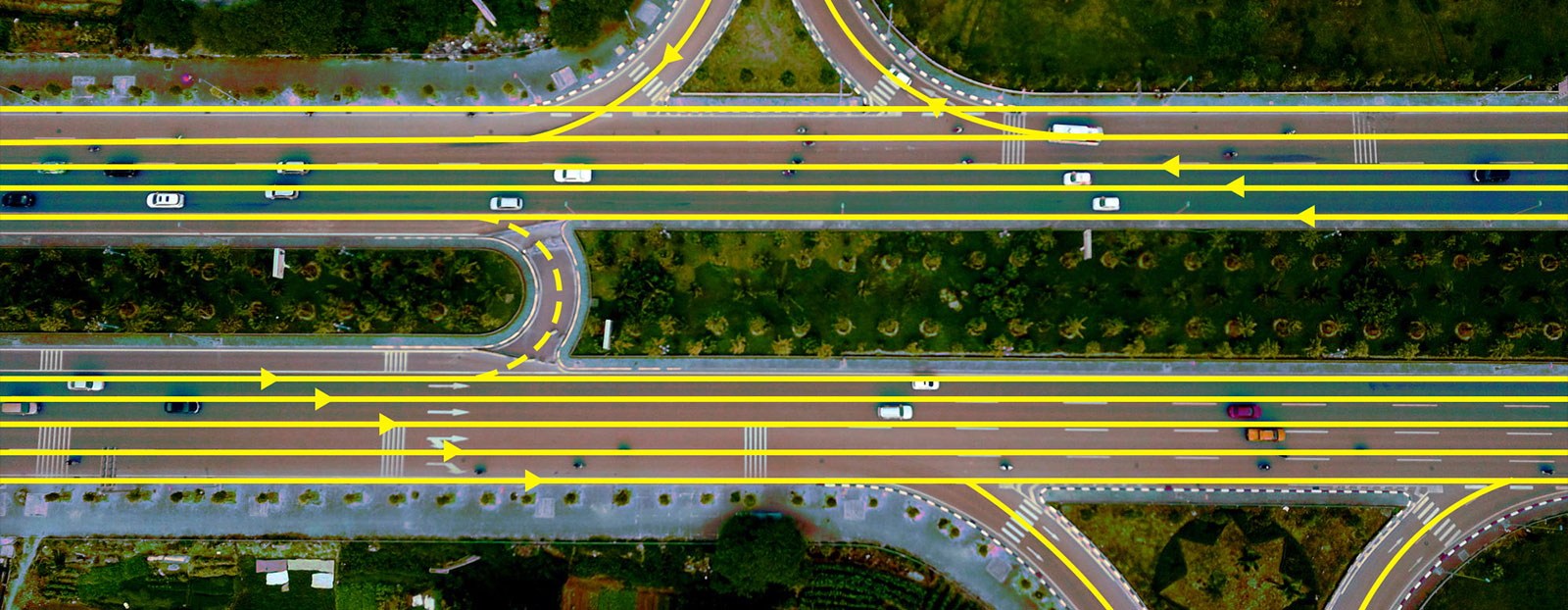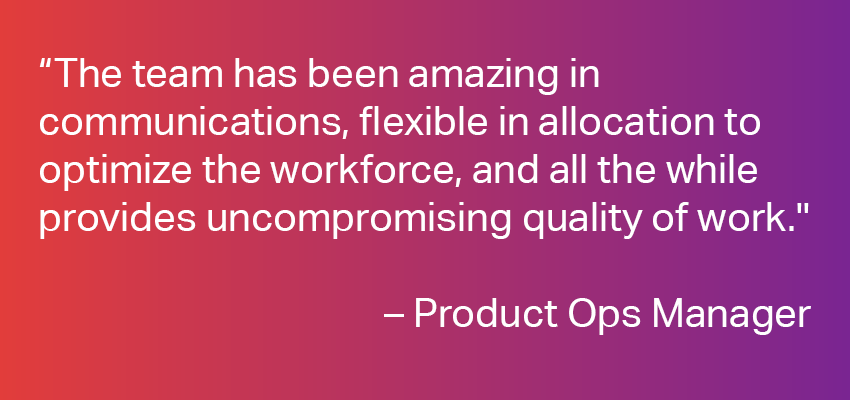Accelerating HD Mapping
Through Tool Innovation
Leading autonomous vehicle company accelerated their HD mapping through process automation, tool innovation, and expert data annotation to achieve scalable results without team expansion.
Challenge
United States based robotics company and leader in innovative autonomous transportation solutions.
They have deployments in nearly 20 cities across the US and are known for their vehicles’ advanced decision-making capabilities.
As their data needs became increasingly complex and required greater scale, they faced limitations in their tool functionality and lacked internal expertise, which constrained annotation throughput and performance.

Manual processes such as selecting multiple features or similar-speed-limit lanes were cumbersome. Critical functionalities such as lasso selection, gore paint boundaries, and precise measurement tools, were either missing or underperforming. Additionally, the client encountered performance issues with large files and time-consuming validations, all of which slowed throughput and project momentum, ultimately impacting deployments. With a growing demand and no desire to proportionally increase their team, they sought a partner experienced in HD mapping to enhance tool efficiency, elevate production quality and throughput.
Solution
- Deployed tiered GIS talent to execute both foundational and advanced HD mapping tasks using AWS RTN and QGIS
- Proposed 12 tool enhancements to improve mapping efficiency, accuracy, and user experience
- Conducted RTN validator reviews and city-specific QA feedback sessions to drive annotation standardization and quality
- Rolled out comprehensive validator training and updated PKTs to reinforce best practices and project knowledge
- Reengineered the QA workflow to include three internal validation layers, improving first-pass accuracy and reducing client rework
To support the clients large-scale HD mapping efforts, iMerit deployed a specialized team with a tiered skill structure designed to handle both foundational GIS tasks and advanced autonomous vehicle mapping. Tier 1, the Foundational Mapping Specialists, focused on baseline cartographic work such as image identification, road digitization, and coordinate tagging.
These specialists held at least a GIS diploma, demonstrated EFSET B1 English proficiency, and brought 6+ months of hands-on GIS experience using tools like QGIS. For more complex requirements, Tier 2 AWS Mapping Specialists were engaged. These individuals had bachelor’s degrees, EFSET B2 proficiency, and a minimum of a year of experience, with deep expertise in AWS’s AppStream Route Network Tool (RTN), spatial analysis, transport networks, and data consistency.
iMerit also played a central role in identifying and implementing 12 tool enhancements to improve usability and throughput. These included features like a lasso tool for multi-feature selection, polygon split for addressing validation issues at driveways, and additional boundary types (dotted, broken, and solid lines). Other improvements ranged from creating shortcuts such as Ctrl+F lane creation and measurement scales to bulk speed limit selections, AOI snap-to-boundary functions, and auto-splitting sidewalk polygons. These changes were aimed at improving tool efficiency, visual clarity, and large file performance.
As part of its quality strategy, iMerit instituted a series of QA feedback sessions and RTN validator reviews across cities. These reviews led to detailed guidance: preserving existing labeling, minimizing node count, labeling meta gaps, prohibiting node overlaps, and enforcing bidirectional sidewalk annotations. Specific validator instructions also covered stop sign placement, avoiding “Assume Static” assumptions, and aligning features with the intensity map. Optional checks and validator types in RTN were clarified to align quality expectations. To ensure consistency, iMerit conducted validator-specific briefings, delivered tailored training, and issued updated Project Knowledge Transfers (PKTs) across the team.
Recognizing inefficiencies in the existing QA model, iMerit redesigned the annotation workflow. The previous system—dependent on two QA loops with feedback shared externally—often resulted in multiple revision cycles. The new model introduced three internal QA layers: one before each external QA submission phase. These internal checkpoints validated work quality at every stage, improved first-pass acceptance rates, minimized client-side revisions, and reinforced internal accountability.

Result
iMerit’s contributions enabled the client to increase their monthly output by 50% while simultaneously reducing annotation time by 20%.
QA rejection rates dropped by 60%, illustrating a significant quality improvement.
These results reflect a strong trust in iMerit’s delivery model and the technical foresight embedded into the partnership.

